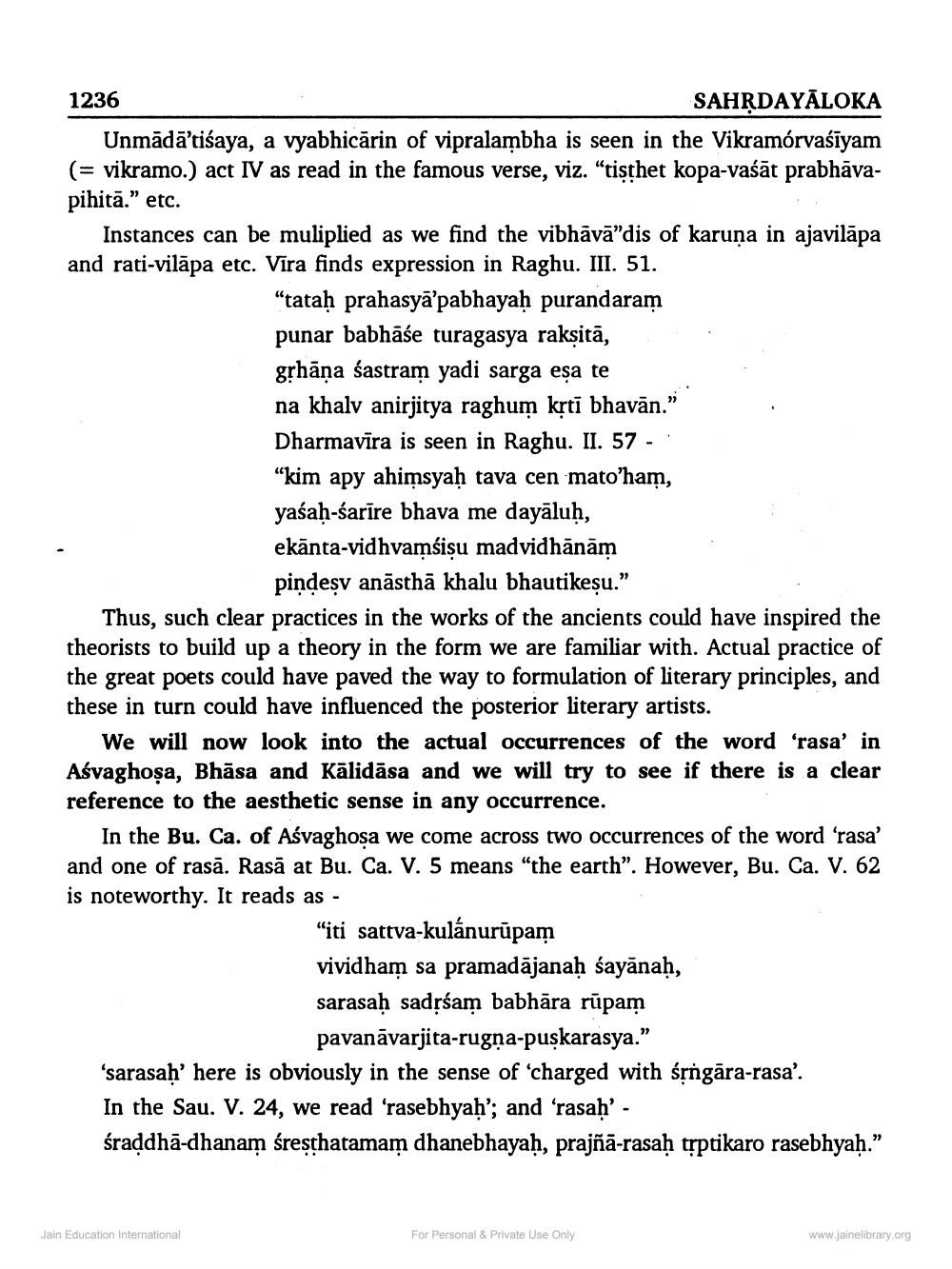________________
SAHṚDAYĀLOKA
Unmādā'tiśaya, a vyabhicārin of vipralambha is seen in the Vikramórvasiyam (= vikramo.) act IV as read in the famous verse, viz. "tisthet kopa-vaśāt prabhāvapihitā." etc.
1236
Instances can be muliplied as we find the vibhāvā"dis of karuņa in ajavilāpa and rati-vilāpa etc. Vira finds expression in Raghu. III. 51.
"tataḥ prahasya'pabhayaḥ purandaram punar babhāśe turagasya rakṣitā, grhāņa sastram yadi sarga esa te na khalv anirjitya raghum krti bhavan." Dharmavīra is seen in Raghu. II. 57 - "kim apy ahimsyah tava cen mato❜ham, yaśaḥ-śarīre bhava me dayāluḥ, ekānta-vidhvamsiṣu madvidhānām
pindeṣv anāsthā khalu bhautikeṣu."
Thus, such clear practices in the works of the ancients could have inspired the theorists to build up a theory in the form we are familiar with. Actual practice of the great poets could have paved the way to formulation of literary principles, and these in turn could have influenced the posterior literary artists.
We will now look into the actual occurrences of the word 'rasa' in Asvaghosa, Bhāsa and Kālidāsa and we will try to see if there is a clear reference to the aesthetic sense in any occurrence.
In the Bu. Ca. of Asvaghosa we come across two occurrences of the word 'rasa' and one of rasă. Rasā at Bu. Ca. V. 5 means "the earth". However, Bu. Ca. V. 62 is noteworthy. It reads as -
"iti sattva-kulánurūpam
vividham sa pramadājanaḥ śayānaḥ, sarasah sadṛśam babhāra rūpam
pavanāvarjita-rugna-puskarasya."
'sarasaḥ' here is obviously in the sense of 'charged with śṛngāra-rasa'. In the Sau. V. 24, we read 'rasebhyaḥ'; and 'rasaḥ' -
śraddha-dhanam śresthatamam dhanebhayaḥ, prajñā-rasaḥ tṛptikaro rasebhyaḥ."
Jain Education International
For Personal & Private Use Only
www.jainelibrary.org




